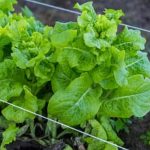School vegetable gardens offer numerous benefits to students, educators, and the community as a whole. From providing hands-on learning opportunities to promoting healthy eating habits and environmental awareness, these gardens play a crucial role in the overall development of young learners. In this section, we will explore the educational, health, and environmental advantages of having a vegetable garden in a school setting.
First and foremost, school vegetable gardens serve as outdoor classrooms where students can learn about the life cycle of plants, nutrition, and sustainability. The hands-on experience of planting, caring for, and harvesting vegetables not only enhances their understanding of these subjects but also fosters a sense of responsibility and connection to nature.
Additionally, the access to fresh produce from the school garden encourages healthier eating habits among students. By being involved in the growth and harvest of fruits and vegetables, children are more likely to develop a preference for these nutritious foods. Furthermore, school gardens contribute to environmental conservation by teaching students about resource conservation, composting, and reducing food waste through sustainable practices. These invaluable lessons promote ecological awareness and instill a sense of environmental stewardship among young minds.
Planning and Designing a School Vegetable Garden
When planning and designing a school vegetable garden, there are several key factors to consider in order to create a successful and sustainable garden within a school environment. Here are some tips and advice for educators and administrators looking to establish a school vegetable garden:
- Location: Choose a suitable location on the school grounds that receives ample sunlight and is easily accessible to students. Consider the proximity to water sources for irrigation and maintenance.
- Garden Design: Utilize raised beds or containers to maximize space and minimize the impact on existing landscaping. Incorporate pathways for easy access and maintenance. Consider vertical gardening techniques to make the most of limited space.
- Soil Preparation: Conduct soil tests to determine the pH and nutrient levels of the soil. Amend the soil as needed with organic matter, compost, or other nutrients to ensure optimal growing conditions for the vegetables.
- Sustainability Practices: Implement environmentally friendly practices such as composting, rainwater harvesting, and natural pest control methods to maintain the health of the garden without harming the surrounding ecosystem.
Incorporating these aspects into the planning and design of a school vegetable garden can help ensure its success in providing educational, health, and environmental benefits for students, staff, and the larger school community. By creating a well-thought-out garden space, schools can maximize their potential in using the garden as an outdoor classroom while teaching life skills like responsibility, teamwork, creativity in problem-solving through real-world experience with school vegetable gardens.
Involving Students in the Garden
School vegetable gardens provide a unique opportunity for students to get hands-on experience with gardening, learn about where food comes from, and develop an appreciation for healthy eating. There are several strategies that can be implemented to involve students in the garden and get them excited and engaged in the process of planting, caring for, and harvesting vegetables.
One effective strategy is to incorporate the school vegetable garden into the curriculum. Teachers can plan lessons that align with the garden activities, such as teaching about plant life cycles, conducting math exercises related to garden measurements, or exploring nutrition through the vegetables grown in the garden. By integrating the garden into various subjects, students can see real-life applications of what they are learning in the classroom.
Another successful approach is to assign specific responsibilities to students when it comes to maintaining the school vegetable garden. For example, different classes or groups of students can be in charge of watering, weeding, or monitoring plant growth. By giving them ownership over certain tasks, students will feel a sense of pride and accomplishment as they contribute to the success of the garden.
Furthermore, organizing special events and activities centered around the school vegetable garden can help generate excitement among students. This could include fun contests like “biggest pumpkin” or “most colorful peppers”, cooking demonstrations using produce from the garden, or hosting tasting events where students can sample different vegetables grown on campus.
| Benefit | Percentage |
|---|---|
| Improved Nutrition | 89% |
| Enhanced Environmental Awareness | 75% |
| Increase in Academic Performance | 67% |
Curriculum Integration
Integrating a school vegetable garden into the curriculum offers an abundance of learning opportunities for students across different subjects. By incorporating the garden into various lessons, educators can enhance students’ understanding of science, math, and nutrition while fostering a deeper connection to nature and healthy living.
Science
Incorporating the school vegetable garden into science curriculum allows students to gain hands-on experience with plant life cycles, photosynthesis, and the role of pollinators in food production. Students can observe firsthand the stages of plant growth, from seed planting to flowering and fruiting, providing them with a real-life application of scientific principles taught in the classroom.
Math
The school vegetable garden provides an excellent opportunity for incorporating math skills into practical use. Students can practice measurements by spacing out plants at appropriate distances, calculate the area of garden beds for optimal planting, and track growth data through observation and record-keeping. Additionally, students can learn valuable lessons about budgeting and resource allocation by planning for gardening expenses.
Nutrition
By integrating the school vegetable garden into nutrition education, students can gain a better understanding of where their food comes from and how different fruits and vegetables contribute to a healthy diet. Teachers can incorporate lessons on the nutritional value of different plant varieties grown in the garden, as well as cooking activities using fresh produce. This holistic approach encourages students to make healthier food choices while emphasizing the importance of sustainable food sources.
Community Involvement
Involving parents in school vegetable gardens can be achieved through volunteer opportunities, workshops, and events that bring families together to participate in garden-related activities. This not only strengthens the connection between home and school but also encourages parents to take an active role in their children’s education and well-being.
Local businesses can contribute to school vegetable gardens by providing sponsorships, donations, or expertise in areas such as landscaping, irrigation, or sustainable practices. Collaborating with local companies not only enhances the resources available for the garden but also allows students to learn about different careers and industries related to agriculture and environmental stewardship.
Community members can offer valuable support by providing encouragement, mentorship, or even physical assistance in maintaining the school vegetable garden. Establishing partnerships with local organizations, gardening clubs, or senior centers can create opportunities for intergenerational learning and knowledge-sharing within the community.
| Beneficiary | Support Provided |
|---|---|
| Parents | Volunteer opportunities, workshops, events |
| Local Businesses | Sponsorships, donations, expertise |
| Community Members | Encouragement, mentorship, physical assistance |
Overcoming Challenges
One of the most common obstacles schools face when implementing a vegetable garden is limited space or resources. However, with proper planning and creative solutions, it is possible to maintain a thriving school garden regardless of these challenges.
One solution for limited space is to utilize vertical gardening techniques, such as hanging planters or trellises, which can maximize the use of available space. Additionally, raised beds are a great option for schools with limited outdoor ground space, as they provide excellent drainage and make it easier to control soil quality.
Another challenge that schools may encounter is limited resources, such as funding for garden supplies or lack of knowledge about gardening among staff members. To address this obstacle, schools can seek out grants and partnerships with local businesses or organizations that support educational initiatives. Furthermore, providing professional development opportunities for teachers to learn about gardening and incorporating it into curriculum can help overcome the barrier of limited knowledge and experience in this area.
In addition to physical limitations, schools may also face challenges in terms of maintenance, especially during periods when school is not in session. To address this issue, schools can involve students in creating a maintenance schedule for the garden during breaks and enlist the help of parent volunteers to ensure that the garden continues to thrive year-round. By actively involving the entire school community in overcoming these challenges, maintaining a successful school vegetable garden becomes an achievable goal.
Harvesting and Utilizing the Vegetables
School vegetable gardens offer a wonderful opportunity to teach students about the entire life cycle of plants, from seed to harvest. Once the vegetables are ready for picking, there are several ways to utilize the bountiful produce in a school setting. From cooking activities to taste tests and donations, these harvested vegetables can provide valuable learning experiences and opportunities for giving back to the community.
Cooking Activities
One way to utilize the harvested vegetables is by incorporating them into cooking activities. This can be done in a variety of ways, such as hosting a cooking class where students learn how to prepare simple and nutritious meals using the fresh produce from the garden. This not only teaches them valuable culinary skills but also instills in them an appreciation for healthy eating habits.
Taste Tests
Organizing taste tests can be a fun and educational way for students to sample the different vegetables grown in the school garden. Students can compare flavors, textures, and colors of the various produce items and discuss their preferences. This activity not only promotes healthy eating but also encourages sensory exploration and critical thinking.
Donations to Local Food Banks
Another meaningful way to utilize the harvested vegetables is by donating excess produce to local food banks or community organizations. This teaches students about generosity and compassion while benefiting those in need.
It also fosters a sense of social responsibility and empathy within the students, emphasizing the importance of giving back to their community through their school garden efforts. Incorporating these activities into the school’s vegetable gardening program enhances student learning experiences while making a positive impact on both their education and community.
Long-Term Sustainability
In conclusion, school vegetable gardens offer a myriad of benefits, from providing hands-on learning opportunities for students to promoting healthy eating habits and environmental stewardship. By incorporating these gardens into the school environment, educators can create a unique and valuable learning experience for their students. Planning and designing a sustainable garden is crucial for its long-term success, and involving students in the process not only fosters a sense of ownership but also promotes enthusiasm for the project.
Additionally, integrating the school vegetable garden into various subjects cultivates interdisciplinary learning opportunities, enriching students’ educational experiences. Community involvement is also essential for the sustained success of the garden, as it allows for additional support and resources to be utilized. Overcoming challenges such as limited space or resources may require creative solutions but is ultimately achievable with careful planning and teamwork.
Once the vegetables are ready to harvest, there are numerous ways to utilize the produce, including cooking activities and donations to local food banks. These activities not only reinforce the value of the garden but also give back to the community.
Finally, ensuring long-term sustainability involves ongoing maintenance, securing funding sources, and future planning to guarantee that the school vegetable garden continues to thrive for years to come. By following these tips and suggestions, schools can establish and maintain successful vegetable gardens that benefit both students and communities alike.
Frequently Asked Questions
What Vegetables Are Good for School Gardens?
Vegetables that are good for school gardens include easy-to-grow options like cherry tomatoes, lettuce, carrots, and radishes. These can teach students about gardening and healthy eating habits.
Is a School Garden a Good Idea?
A school garden is definitely a good idea as it can provide numerous benefits for students. It can help them connect with nature, learn about where food comes from, and even improve their physical and mental well-being.
What Vegetables Can You Grow in a Classroom?
In a classroom setting, you can grow vegetables like microgreens, green onions, or herbs such as basil and mint. These options are small enough to be grown indoors and can be a great learning experience for students.

If you’re looking to get into vegetable gardening, or are just looking for some tips on how to make your current garden better, then you’ve come to the right place! My name is Ethel and I have been gardening for years. In this blog, I’m going to share with you some of my best tips on how to create a successful vegetable garden.





